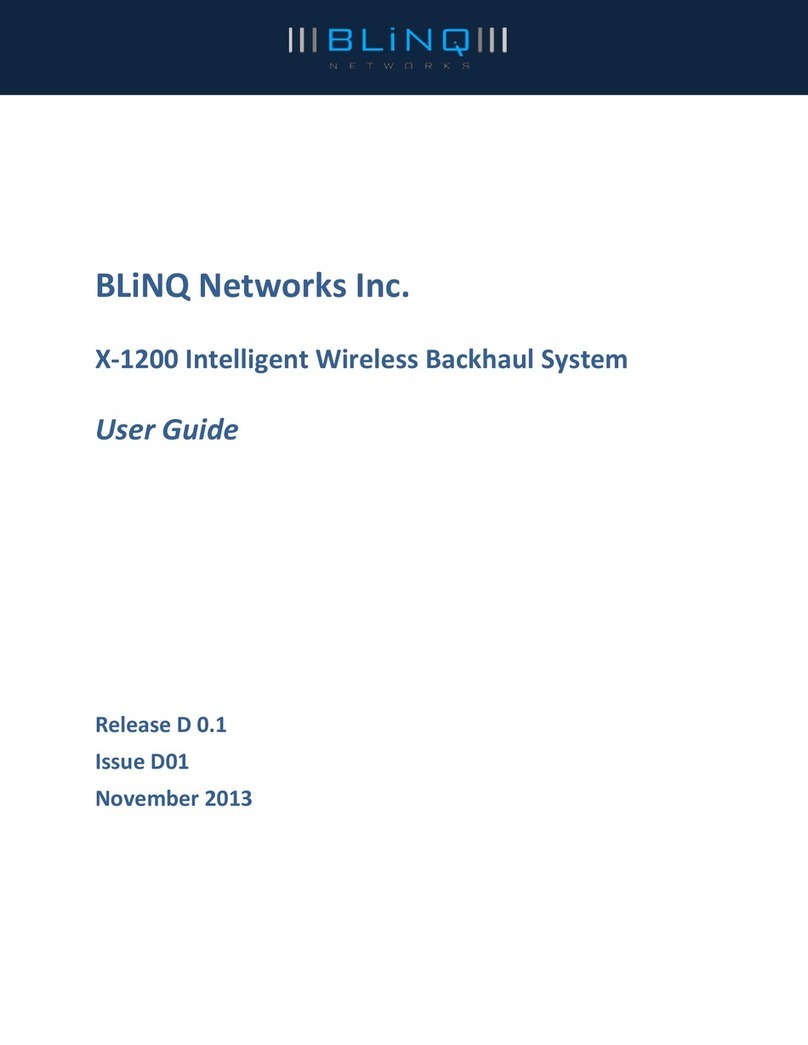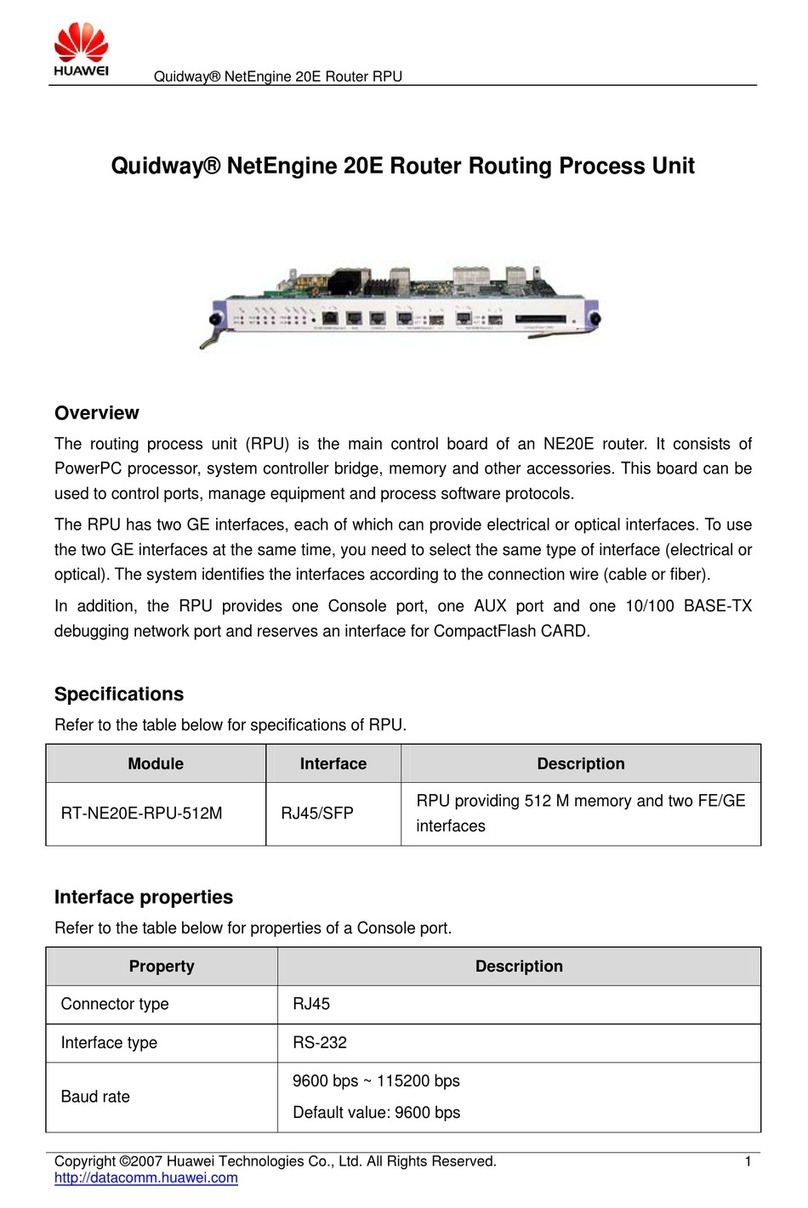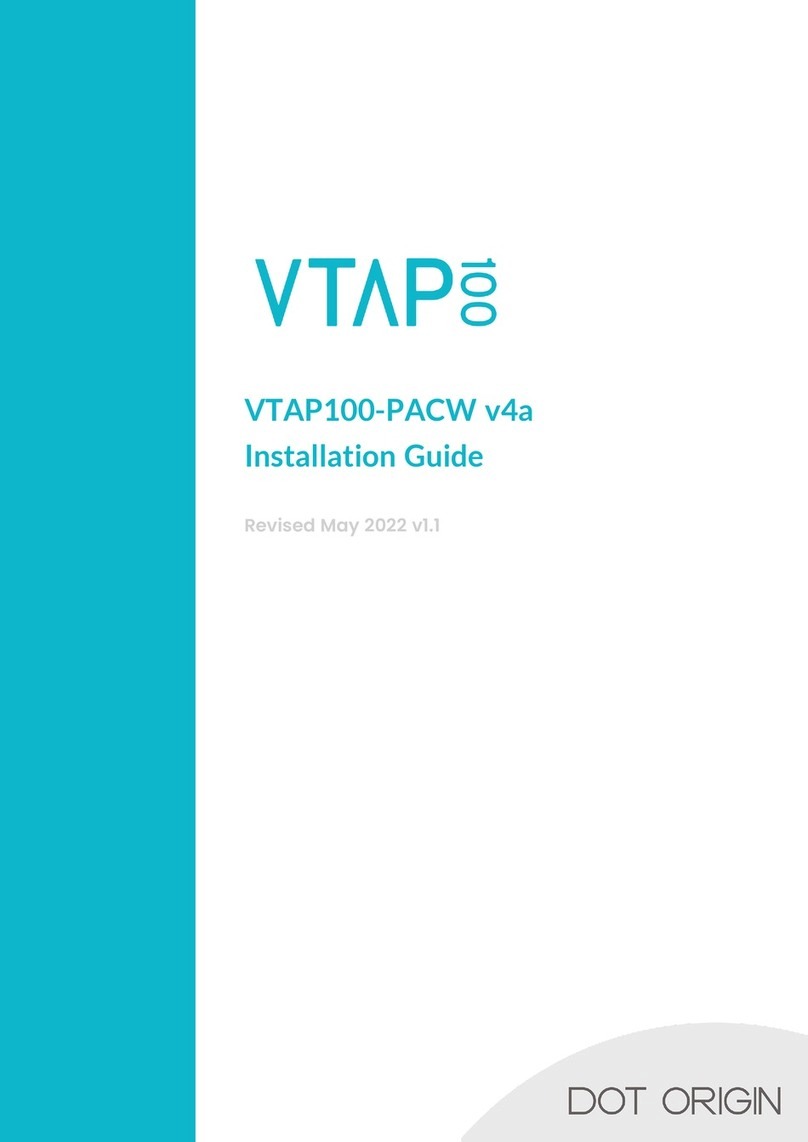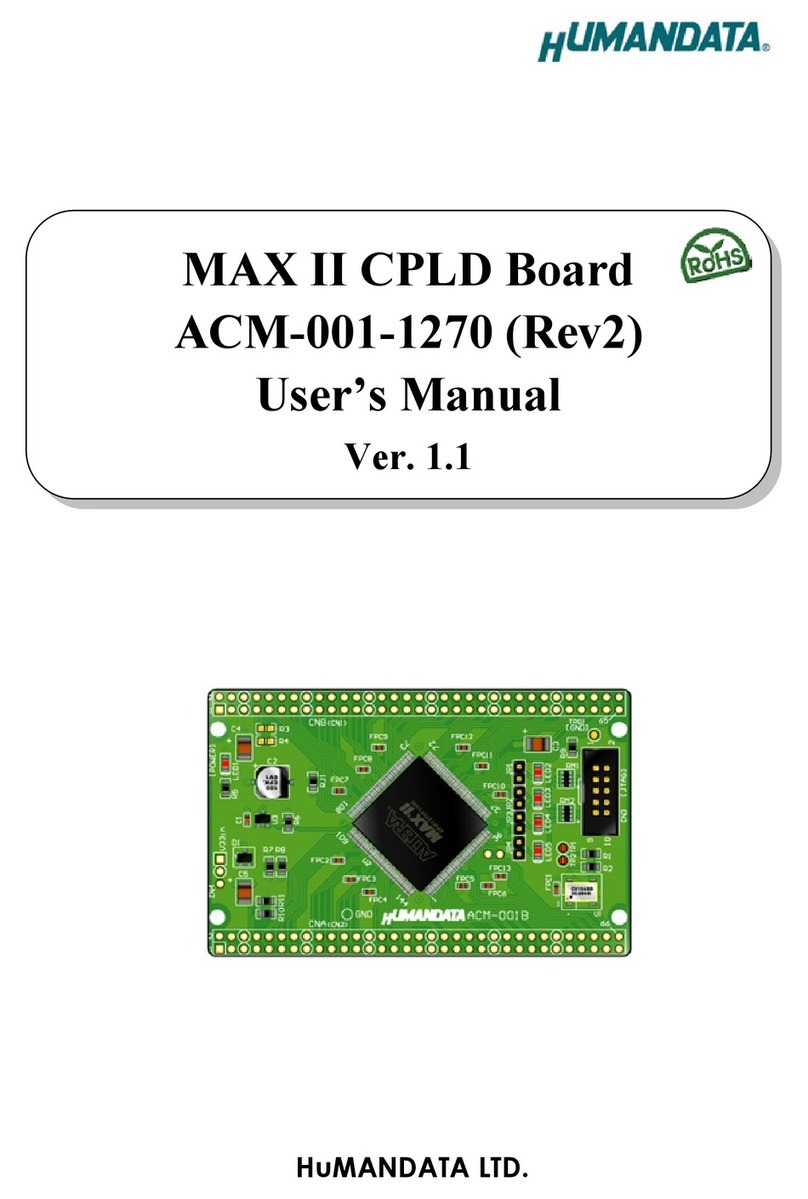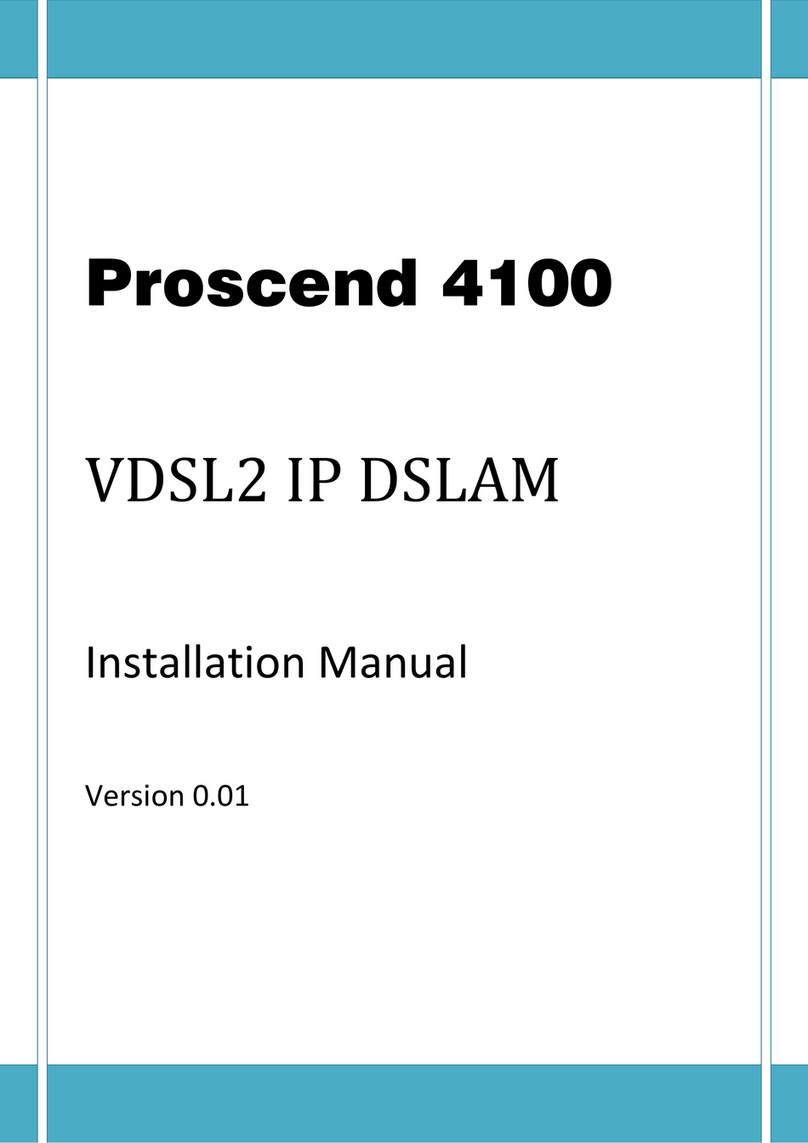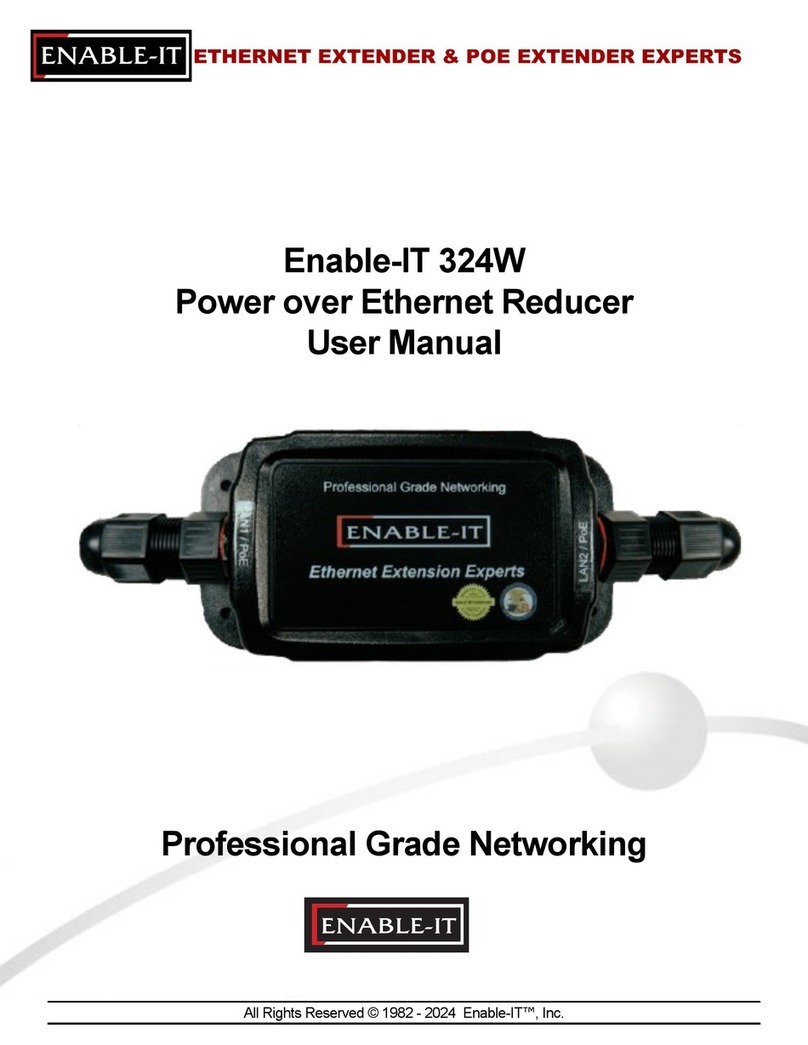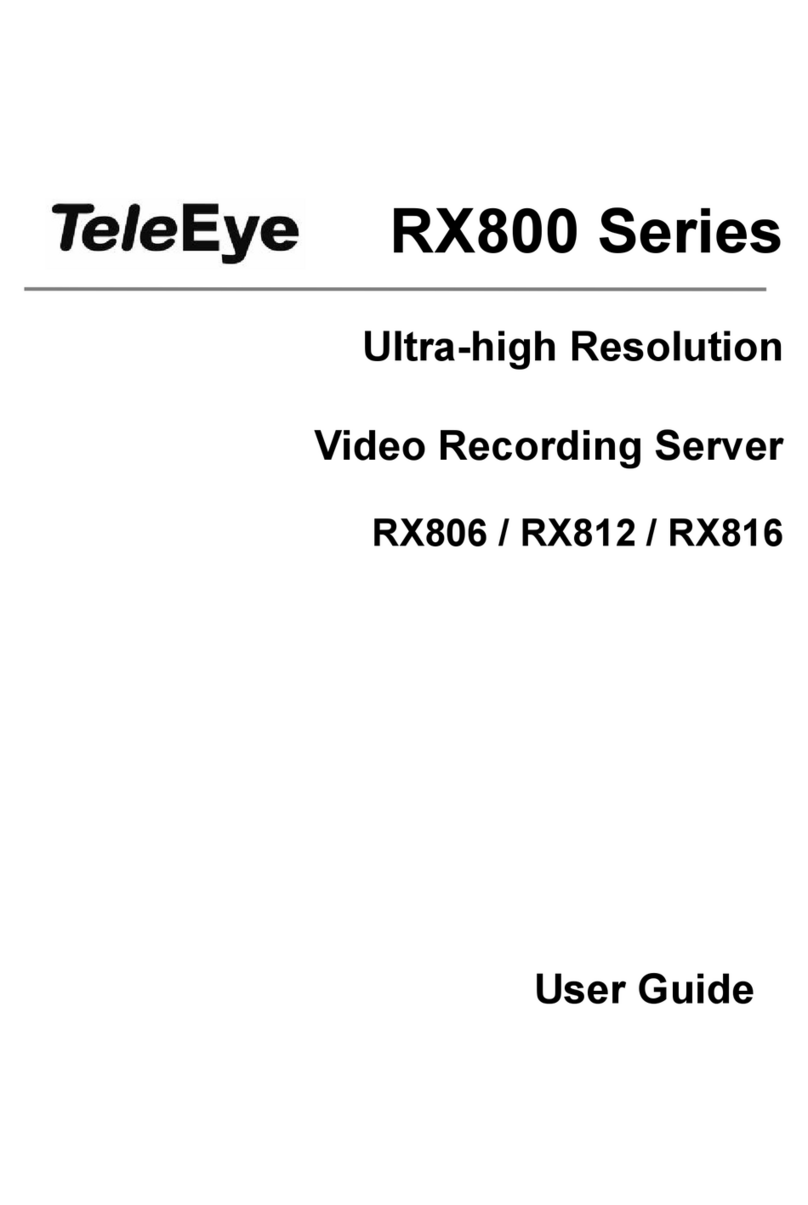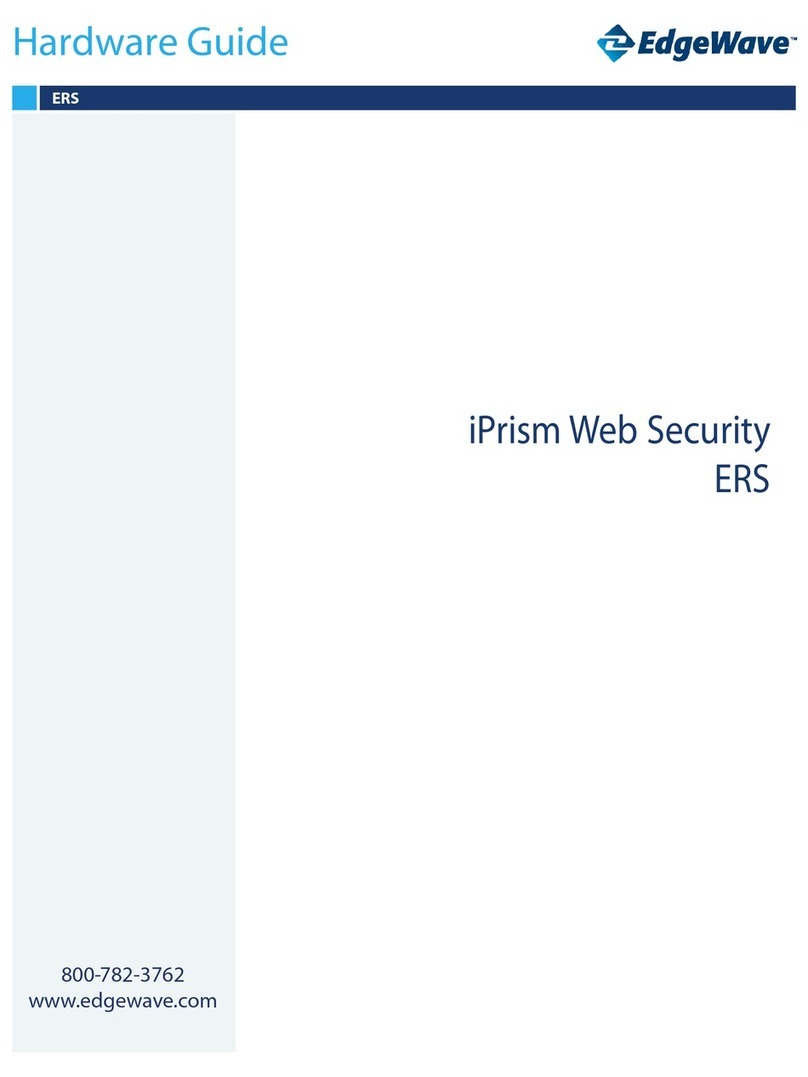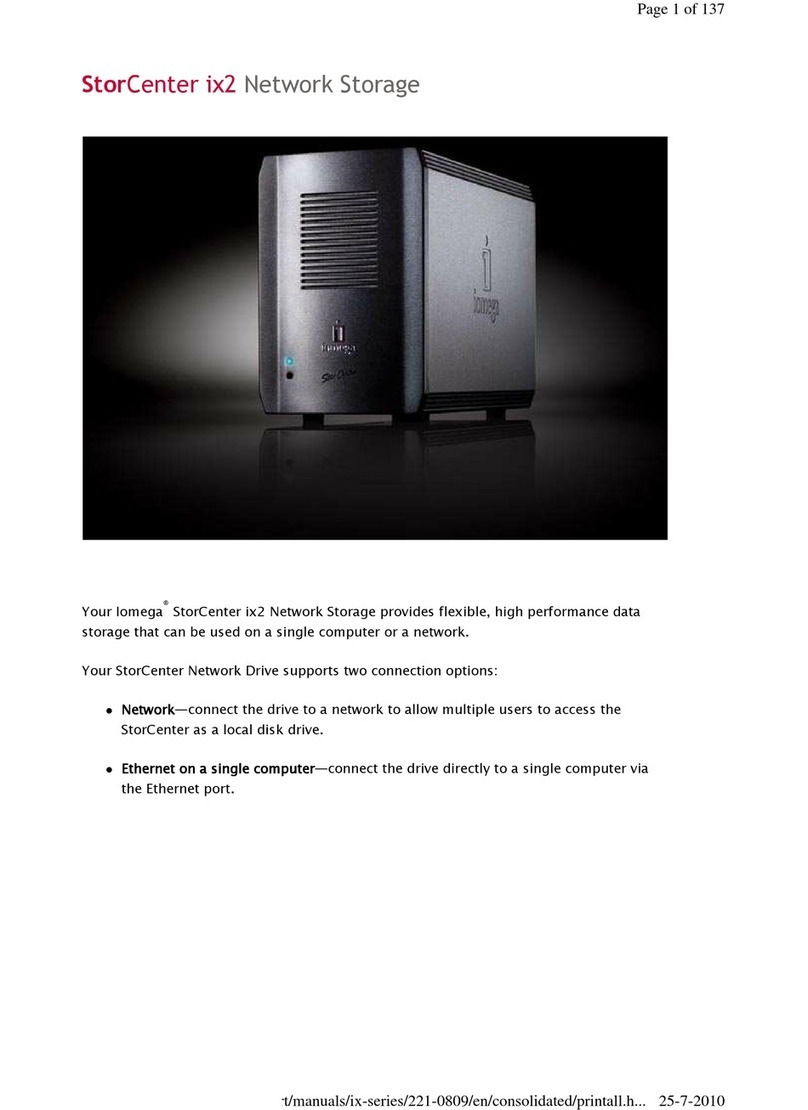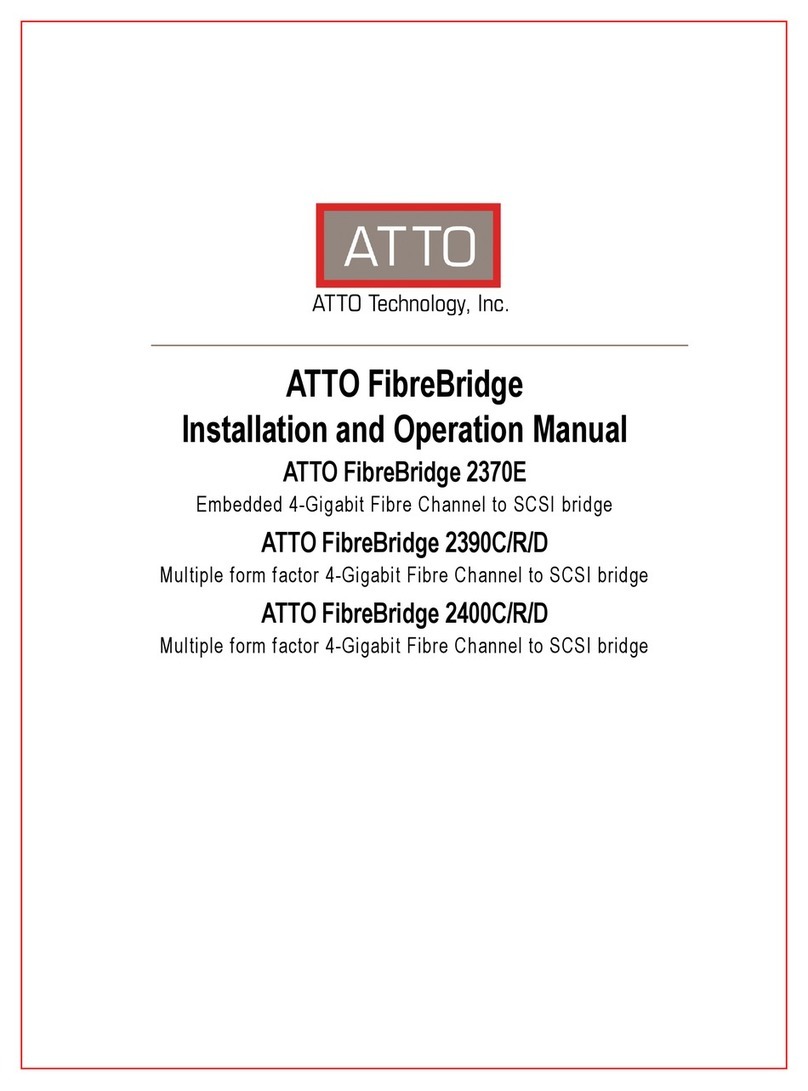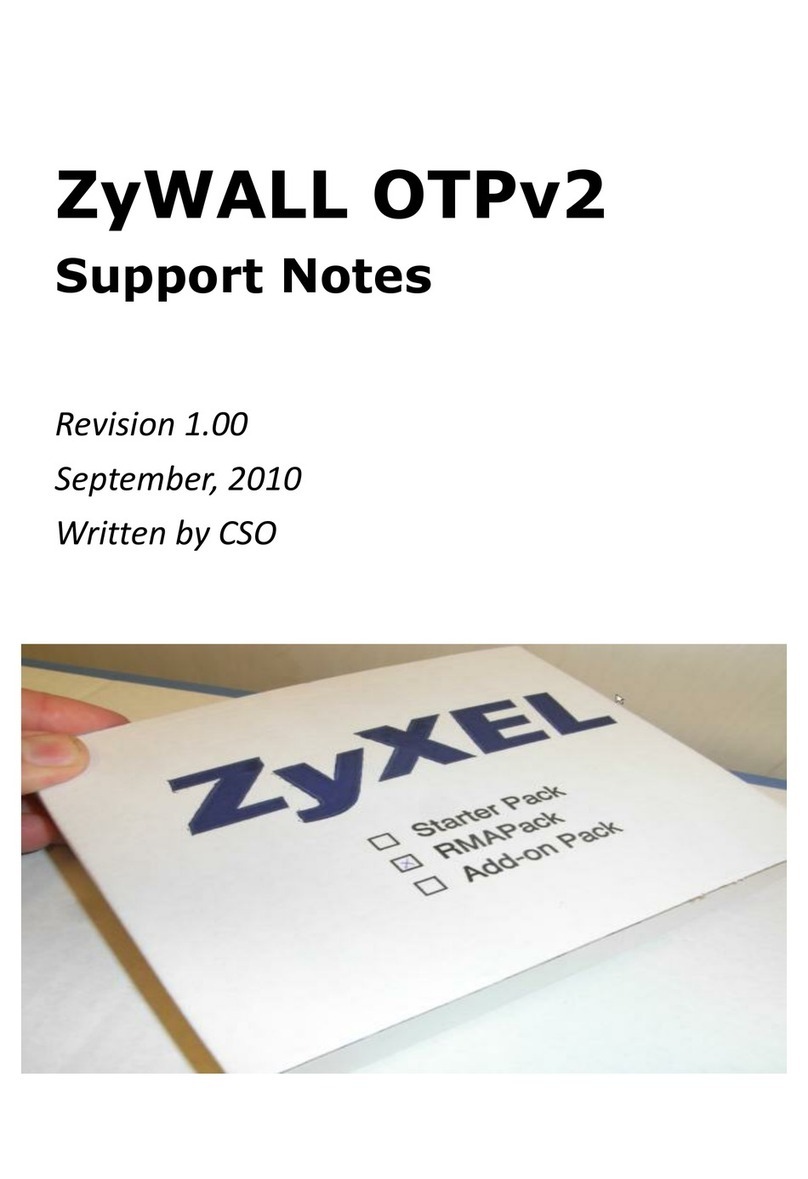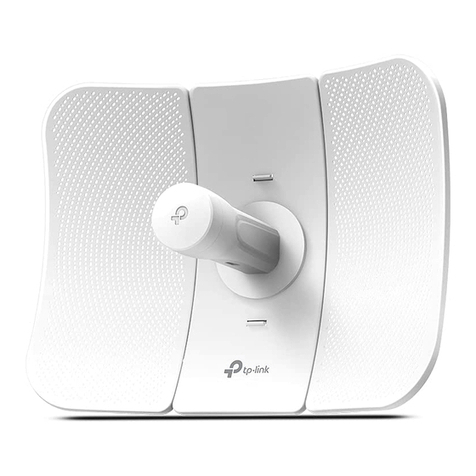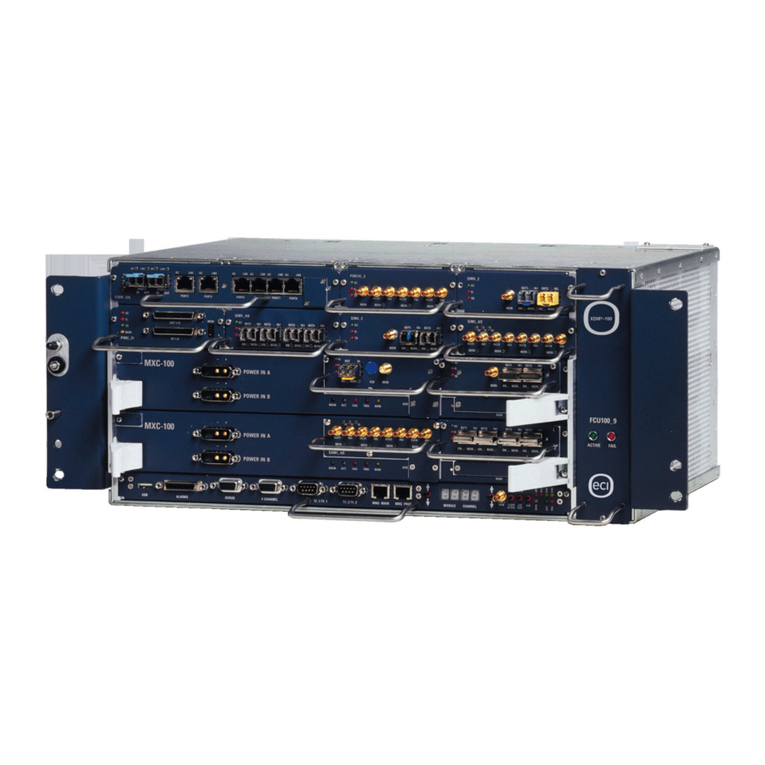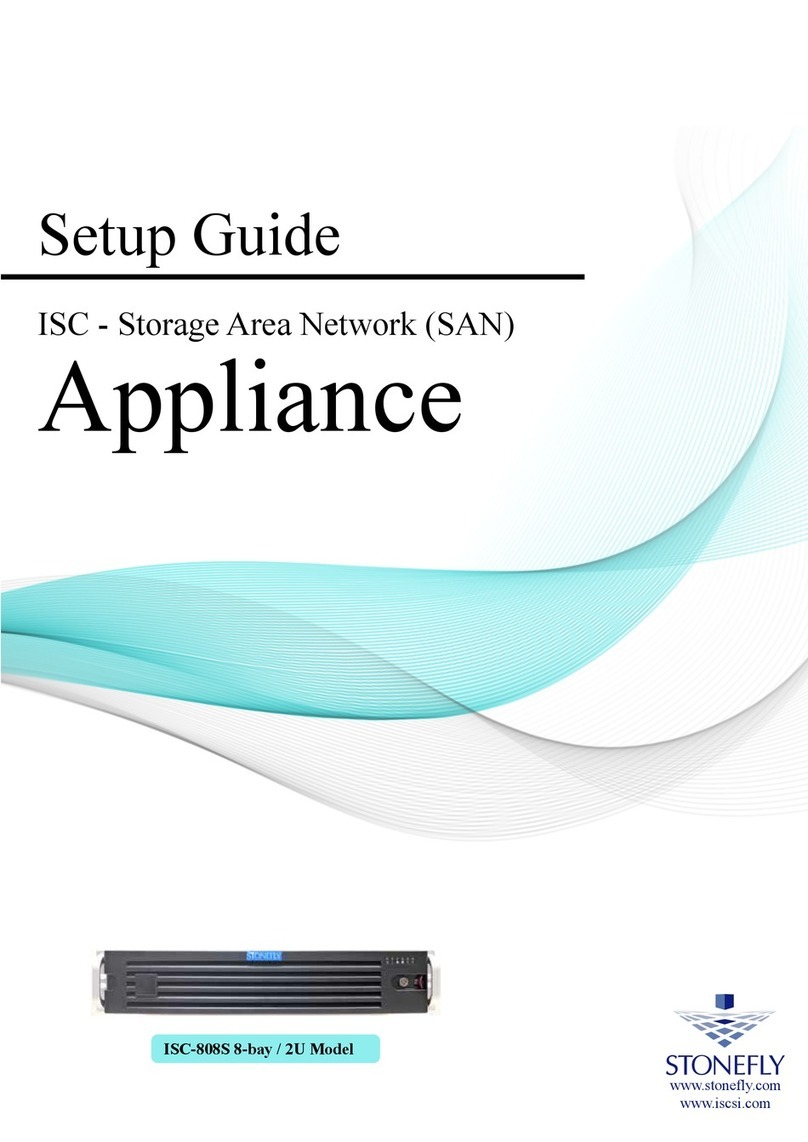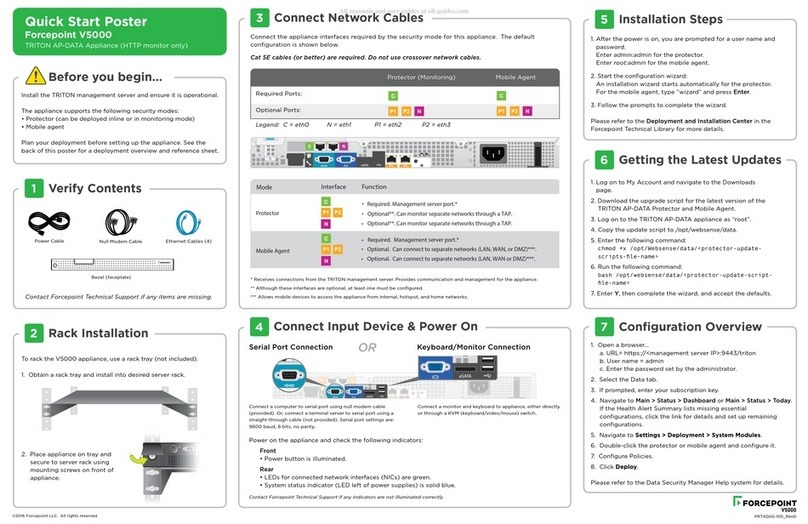BLiNQ Networks Inc. FW-300i User manual

Confidential - Restricted Use and Duplication © Copyright 2012-2018 BLiNQ Networks Inc. All rights reserved. BLINQ NETWORKS (CCARI) •205 -140 RENFREW DRIVE,MARKHAM,ON L3R6B3 CANADA •1-416-214-4204 Release 2.1
Online Help Portal: support.blinqnetworks.com
FW-300i Quick Installation Guide
SYSTEM PARAMETERS
SYSTEM
Configuration
3xeNBs with frequency reuse 2 and 3
Connectivity
Default: 1 x Copper 1000BaseT; Optional: 1 x SFP
Synchronization
Integral GPS antenna (GPS, GLONASS, BeiDou),
Optional: External GPS, 1588v2
ANTENNA SPECIFICATIONS
Antenna System
3 antennas with 60deg azimuthal coverage each; 3 x 2x2
MIMO radios with spatial multiplexing/Tx & Rx diversity
Antenna Gain
17dBi
RADIO SPECIFICATIONS
3GPP LTE Feature Set
Release 10 (upgradable to Release-13*)
LTE-Advanced feature support: 2x2 MIMO, DL 256QAM*, UL
64-QAM*, 3CC Carrier Aggregation (CA)*
Frequency Band
3.40-3.80GHz (LTE Band 42/43), 3.55-3.70GHz (LTE Band 48 -
CBRS)
Transmit Power
-10 dBm to +30 dBm per port, 1 dB resolution
Channel Bandwidth
3x10MHz or 3x20MHz (15MHz*)
PERFORMANCE
Throughput
L2 aggregate uplink and downlink: 115 Mbps per eNB
Supports up to 480 Mbps per eNB*
TDD Configuration1
Max. Throughput (per eNB)
2-7 (default)
DL: 105Mbps UL: 10Mbps
1-6
DL: 83Mbps UL: 20Mbps
1All TDD configurations defined in 3GPP specs supported
OPERATIONS, ADMINISTRATION AND MANAGEMENT (OAM)
Configuration
WebUI / CLI, radio, Ethernet performance monitoring
EMS Integration
SNMP v2c/v3
OAM Protocols
HTTP, HTTPS, TCP/IP, UDP, FTP, SFTP, SSH
MECHANICAL/ENVIRONMENTAL/COMPLIANCE
Dimensions (L x W x D)
13.78in x 22.4in x 8.9in (350 x 570 x 227 mm)
Weight
26.5 lbs (12 kg)
Survival Wind Speed
> 124 mph (200 km/hr)
Operational Temperature
-40 to 60 degrees Celsius (-40 to 140 degrees Fahrenheit)
Enclosure Protection
IP67
POWER
Power Consumption
(Band 46)
80 Watts (W) maximum
Power Consumption
(Band 42, 43, 48)
150 W maximum
Current Draw
(AC/DC)(Max.)
3.5 Amp
Power
48 VDC
Circuit Breaker
20A max
* Software upgrade required
FW-300i SETUP
INSTALLATION
Recommendation:
Pre-configure units in the warehouse then deploy
Record Serial number, MAC, location for each radio
Please prepare tools necessary for each item:
1/4 in. Slot Head Screw (for DC surge protector)
1/4 in. Phillips Screw (for DC surge protector)
3/8 in.-16 Hex Nuts (11/16 in. Width)
1/4 in.-20 Hex Screw (7/16 in. Head Width)
3/8 in.-16 Hex Screw (9/16 in. Head Width)
Recommended Torque Values
ITEM
TORQUE
3/8 in.-16 Hex Screws
16.3Nm or 12lb-ft
3/8 in.-16 Hex Nuts
16.3Nm or 12lb-ft
1/4 in.-20 Hex Screw (Grounding)
5Nm or 3.69lb-ft
Cabling Requirements
Power Cables (Prepare the proper extension cable)
Outdoor Rated Ethernet Cable
Grounding Cable
Make sure all cables and extensions are weatherproof
Installation (Pole Mount, Mounting Assembly and Attaching the Unit)
1
2
3
4
5
6
7
*Tilt numbers are for reference purposes.
8
Attaching Cables
Optional AC/DC Power Converter
ON POWER SUPPLY KIT
NORTH AMERICAN EQUIVALENT
ACL (Brown)
AC Line (i.e., in USA - Black)
ACN (Blue)
AC Neutral (i.e., in USA - White)
Ground (Green/Yellow)
AC Ground
Power Connector on FW-300i
Power connector:
Pin 1: Positive Polarity; Pin 2: Negative Polarity
Cables, Grounding and Lightning protection
Indicators (LED)
LED COLOUR
MEANING
Solid Red
Initial Power-up

Confidential - Restricted Use and Duplication © Copyright 2012-2019 BLiNQ Networks Inc. All rights reserved. BLINQ NETWORKS (CCARI) •205 -140 RENFREW DRIVE,MARKHAM,ON L3R6B3 CANADA •1-416-214-4204 Release 2.1
Blinking Red
Critical Fault
Blinking Amber
Booting
Solid Amber
Radio operational. One or more non-critical faults
Solid Green
Radio operational. No faults.
FW-300i Adjustment
Note: Generally, increasing the downtilt results in less coverage; lowering the FW-300i
height (keeping tilt the same) also has the same impact.
Electrical Tilt: 0 degrees
Mechanical Tilt: 0 - 10 degrees
NOTE: This system is designed for rapid installation. The installer is responsible for
establishing an active link between the FW-300i and CPEs using the CPE WebUI. Once a
link is established, the system throughput and other operational parameters can be
verified.
CONFIGURATION
Default Configuration
The default configuration settings on the FW-300i include:
DHCP: ON
Fixed, non-routable local craft IP address: 169.254.1.1
WebUI: Enabled
Channel bandwidth: 20 MHz
Operating Frequencies: 3580,3600,3620MHz (eARFCN*: 43390,43590,43790)
TDD Frame Configuration: 2 (Special Subframe: 7)
RF Radio State: OFF
Cell State: Disabled
Transmit Power: 23 dBm
Clock source: GPS
*eARFCN shown for Band 42/43. Corresponding eARFCN for Band 48 are: [55540,55740,55940]
Logging In
Local login: SSH or WebUI. Use Local Craft IP: 169.254.1.1
Login from network: DHCP address or manually configured IP.
Default Username/Password: admin/admin
Configuration steps
1. Enter config mode
CLI commands: [config]
-Entering config mode will change the prompter to: Blinq eNB(config)#
-Config mode allows user to make configuration changes to any parameter
2. Set system mode of operation
CLI commands: [system id fixed-wireless-access]
-Enabling ‘fixed-wireless-access’ disables mobility-related functionality
FIXED-WIRELESS-ACCESS MODE of OPERATION
3. Set management IP address
CLI commands: [mgmt ip-config-mode], [mgmt ip], [mgmt netmask], [mgmt
default-gateway]
-IP-config-mode can be set to either STATIC or DHCP
-If set to static: IP address, netmask and default gateway need to be
configured
4. Set channel bandwidth
CLI commands: [radio bandwidth]
-Bandwidth is set to 20MHz by default
5. Set the maximum cell range
CLI commands: [cell range]
-Configuring the cell range parameter, auto-sets the parameters required by
the CPE to establish the link
6. Set operating frequency (eARFCN or frequency) for each sector
CLI commands: [radio rf 0 earfcn], [radio rf 1 earfcn], [radio rf 2 earfcn]
-eARFCN should be configured according to the frequencies licensed for
operation
-To configure frequency directly: [radio freq-setting-mode mfreq], [radio rf 0
frequency], [radio rf 1 frequency], [radio rf 1 frequency]
7. Set transmit power
CLI commands: [radio rf 0 tx-power], [radio rf 1 tx-power], [radio rf 2 tx-power]
-Transit power should be set to the max (30dBm). Unless otherwise required, BLiNQ
recommends to keep this value
8. Set cell identity parameters (cell ID, cell group ID)
CLI commands: [cell sector 0 cell-id], [cell sector 0 cell-group-id], [cell sector 1
cell-id], [cell sector 1 cell-group-id], [cell sector 2 cell-id], [cell sector 2 cell-
group-id], [cell tracking-area-code]
-Cell-ID & Cell Group-ID define each cell’s Physical Cell ID (PCI) which is used to decode data
transmission
-PCI calculation: 3*[cell-group-id] + [cell-id]
-BLiNQ recommends to pre-draft a careful PCI assignment strategy to avoid interference
due to PCI reuse; preconfigured default values can be used
-Refer to ‘PCI Planning Guidelines’ section for more information
9. Set eNodeB ID
CLI commands: [cell enb-id]
-eNodeB ID is used to identify each cell when establishing a connection with the EPC (i.e. three
connections setup per FW-300i)
-Three IDs are auto-generated from the configured value of this parameter for each cell
respectively using the following logic: {[enb-id]*256}, {[enb-id]*256+1}, {[enb-id]*256+2}
-All three IDs should match with the configured values in the EPC
10. Set EPC specific information
CLI commands: [epc plmn-id], [epc mme mme-ip], [epc sgw sgw-ip]
-PLMN ID defines the network; it consists of 3-digit mobile country code and 2(or 3)-
digit mobile network code. Value entered should match the one in EPC
-MME and SGW IP addresses define the route for the control and user plane traffic
respectively. By default, both are set to the same value
11. Set FW-300i IP address (optional)
CLI commands: [epc enb enb-ip], [epc enb enb-netmask]
-This defines the IP address used by the FW-300i to communicate with EPC. It
should be configured within the same subnet as the EPC
-eNodeB IP is auto-set to the management IP if the IP config mode is DHCP
12. Enable each sector and turn radio transmitter “ON”
CLI command: [cell sector X cell-enabled], [radio rf X admin-state]
-Cells are disabled by default
13. Commit changes and reboot system
CLI command: [commit], [exit], [copy running-config startup-config], [system
reboot]
-Exit command will change prompter to Blinq eNB#
-Copy running-config to startup-config command will make the changes persistent
over reboots
MOBILITY-BASED MODE of OPERATION
For small-cell operation, complete steps [1-9] outlined in ‘Fixed-Wireless-Access’
mode followed by the ones outlined below
1. Set IDLE-mode mobility parameters
CLI commands: [cell num-si 5], [cell ue-inactivity-timer], [cell uetimers uetimers-
t304], [cell uemsrctrl s-measure-set], [cell uemsrctrl s-measure-set-value], [cell
sib3 sib3-sintra-search], [cell sib3 sib3-sintra-search-value], [cell sib3 sib3-
snonintra-search], [cell sib3 sib3-snonintra-search-value]
-Idle mode mobility parameters enable reselection to neighbour cells
-Special care should be taken in the configuration so as to avoid
unnecessary ping-pong between cells
2. Set CONNECTED-mode mobility parameters
CLI commands: [cell uemsrctrl report-a2 0 a2-threshold-rsrp], [cell uemsrctrl
report-a3 0 a3-offset], [cell uemsrctrl report-a4 0 a4-threshold-rsrp], [cell
uemsrctrl report-a5 0 a5-threshold1-rsrp], [cell uemsrctrl report-a5 0 a5-
threshold2-rsrp]
-Connected mode mobility parameters enable handovers to neighbour cells
-Special care should be taken in the configuration so as to avoid
unnecessary ping-pong between cells
3. Set frequency & cell neighbour relations
CLI commands: [cell eutran-freq-relation 0 arfcn-value-eutran-dl], [cell eutran-
freq-relation 0 number-of-eutran-cells], [cell eutran-freq-relation 0 cell-
reselection-priority-value], [cell eutran-freq-relation 0 cell-relation 0 cell-
identity], [cell eutran-freq-relation 0 cell-relation 0 phy-cell-group-id], [cell
eutran-freq-relation 0 cell-relation 0 phy-cell-id], [cell eutran-freq-relation 0 cell-
relation 0 ho-allowed], [cell eutran-freq-relation 0 cell-relation 0 tac]
-Up to eight frequency neighbour relations can be defined
-Up to 16 neighbour cells can be defined
4. Set X2 relations
CLI commands: [epc ext-enb-config 0 ext-enb-ip]
-Up to five X2 relations can be defined
5. Set cDRX parameters
CLI commands: [mac 0 drx on-duration-timer], [mac 0 drx inactivity-timer],
[mac 0 drx long-cycle-type], [mac 0 drx-config]
-DRX allows battery savings for handheld devices
Step [11] outlined in ‘Fixed-Wireless-Access’ mode needs to be followed after the
aforementioned steps to save the changes and to make them persistent over system
reboot
SAS
SAS server connectivity is required for operation within LTE Band 48
Operating frequency, RF transmission and transmit power per sector are configured
based on the grants received by the SAS server
CLI commands: [cbsd common user-id], [cbsd common fcc-id], [cbsd common radio-
tech], [cbsd common sas-server-url], [cbsd enb id], [cbsd enb category], [cbsd enb
latitude], [cbsd enb longitude], [cbsd enb height], [cbsd enb height-type], [cbsd enb
h-accuracy], [cbsd enb v-accuracy], [cbsd enb indoor-deployment], [cbsd enb
antenna-azimuth], [cbsd enb antenna-downtilt], [cbsd enb antenna-gain], [cbsd enb
antenna-beamwidth], [cbsd enb group-type], [cbsd enb meas-capability-list 0
capability]

Confidential - Restricted Use and Duplication © Copyright 2012-2019 BLiNQ Networks Inc. All rights reserved. BLINQ NETWORKS (CCARI) •205 -140 RENFREW DRIVE,MARKHAM,ON L3R6B3 CANADA •1-416-214-4204 Release 2.1
Synchronization
FW-300i contains integrated GPS receiver; Holdover period after loss of sync: 10
minutes
PPS port also available for external GPS integration
Note: Radio stops transmitting after holdover period expires.
FW-300i Sectors
EPC SETUP
CONFIGURATION
Configuration Steps
1. Set MME to define PLMN
CLI command: [set mme plmn=00101]
-PLMN ID should match the configuration on the FW-300i
2. Define eNB settings (PLMN-eNodeB ID)
CLI command: [add enodeb 00101-1]
-Defines the PLMN-eNodeB ID to establish the connection between FW-300i and
EPC
-Should match the configuration on the FW-300i
3. Set Access Point Name (APN) and IP pool range
CLI command: [add apn internet network=10.0.0.0 netmask=255.255.255.0 first
10.0.0.2 range=255]
-APN differentiates different services allowed on the network
-IP addresses associated with each APN can be configured to be assigned
dynamically (within the range provided) or statically (range=0)
4. Configure HLR to add subscriber identity and QoS profiles
CLI command: [add hlr imsi=IMSI msisdn=MSISDN imei=IMEI k=K opc=OPC
ambrul=10 ambrdl=100 1,internet,,9]
-Subscriber information for each CPE needs to be added to the HLR
-Identity information includes SIM card ID (IMSI), phone number (MSISDN), CPE ID
(IMEI), network authentication keys (K, OPC)
-QoS profile includes max. allowed UL & DL bitrates (ambrul, ambrdl), associated
APN and quality class identifier (QCI)
-Unless explicitly required, the QoS configuration should be left to default values
CPE SETUP
INSTALLATION
CPE Alignment
1. Connect a laptop to the ethernet port of the CPE power adapter
2. Access the CPE WebUI (via a browser) by navigating to: https://192.168.15.1
3. Login by using default username password: admin/admin
4. Configure the CPE as per the steps outlined in the following section
5. Once connection with the FW-300i is established, the CPE alignment can be
optimized to receive peak signal
6. Signal strength (RSRP) and quality (CINR) values appear on the WebUI ‘LTE Status’
tab and the maximum value for both quantities indicate the best alignment
Note: Steps outlined within this section are for BLiNQ CPE (FWC-110-35). Please refer to the
relevant documentation for other vendors.
CPE CONFIGURATION
Configuration Steps1
1. Set the management (LAN) IP address
2. Set the operating RF channel number –locking to specific RF channel will ensure
that the CPE is always served by the best sector
3. Configure the APN associated with the CPE’s profile in EPC
4. Set port forwarding rules to enable southbound traffic flow
1Note: Generic configuration steps are outlined within this section –please refer to the vendor
specific documentation for detailed information pertaining to the CPE setup. BLiNQ CPE (FWC-
110-35) was used during FW-300i lab testing.
FW-300i KEY PERFORMANCE & OPERATIONAL PARAMETERS
Use either the CLI or WebUI to view and monitor the operational parameters and
performance statistics.
Using CLI: Partial keyword tab is enabled
help ? Displays all commands
show ? Displays all show commands; i.e. show active alarms, show pm stats,
show system
WebUI - URL = IP address of target unit e.g. http:// 192.168.26.2:8080
WebUI displays: System Overview, Radio/Sector/EPC Setup, Performance and Admin
Performance: View Performance Page; Displays statistics per CPE (RNTI, RSSI, SINR,
MCS, Tx Pout, STATE)
System Overview: View System Overview page; Displays FW-300i system name,
location, clock source and management interface information
Radio/Sector/EPC: Displays system operational parameters (cell config, IP addresses,
functional state)
Alarms*:View Events Alarms & Events History Pages
* Alarms will be available in a future SW release soon
TROUBLESHOOTING
SYMPTOM
POSSIBLE CAUSE
SOLUTION
State LED stuck
continuously
on red or
amber
OS or configuration mismatch
preventing the unit from
entering functional state
Reboot unit. If problem persists over multiple reboots,
contact BLiNQ Networks Support.
FW-300i unable
to form SCTP
link with EPC
Wrong MME IP address set
Verify the MME IP address and SCTP port number
settings on FW-300i
SCTP association not set in EPC
Verify SCTP interface configuration on EPC
Wrong eNB-ID set on EPC
Verify eNB settings on EPC which might be causing the
SCTP association request to be rejected
FW-300i unable
to ping the
Gateway
Wrong IP address set
Verify the IP address, Netmask, and gateway address
MGW misconfiguration
Verify the RAN, CN and NAT interface definition for
the MGW on EPC
CPE unable to
form link with
FW-300i
Link is down due to loss of GPS
sync
Reboot the FW-300i.
Wrong RF channel number
Verify the RF channel number configured on CPE to
confirm that it matches to FW-300i
APN misconfiguration
Verify the APN configured on CPE is the same as in the
CPE profile on EPC
Cell range misconfiguration
Verify FW-300i cell range parameter is larger or equal
to the distance of the furthest CPE
CPE unable to
pass data traffic
Link is down
Confirm that the RF channel number is correctly
configured on CPE. Restart CPE to trigger network
entry again
Link quality is poor
Analyze the link performance metrics (RSRP, CINR, Tx
Pwr) on the CPE to determine if it’s being served by
the best available sector. Antenna orientation
optimization may be required.
Wrong mode of operation
Verify that the CPE is operating in NAT mode
Port forwarding missing
Verify that the port forwarding configuration on the
CPE matches the type of traffic being sent
PCI PLANNING GUIDELINES
The rules outlined below should be abided to in order to minimize PCI collision and
enforce an effective PCI assignment strategy:
Rule 1: Same PCI Utilization
-Multiple cells within a FW-300i on the same frequency shouldn’t have the same PCI
-Immediate neighbour cells on the same frequency shouldn’t have the same PCI
Rule 2: PCI MOD3
-Cells on same frequency within similar coverage area should not have the same PCI
MOD3 (i.e. PCIcellA != PCIcellB)
-Occurs due to the fact that when PCI X is changed by a factor of X+3n (where n is an
integer) there is a collision on the reference signals between the two antenna ports, i.e.
between the PCI[X]-antenna port0 and PCI[X+3n]-antenna port1)
-Applicable for MIMO transmission only
Rule 3: PCI MOD6
-Cells on the same frequency within similar coverage area should not have the same PCI
MOD6
-Applicable for SISO transmission only
Rule 4: PCI MOD30
-Cells on the same frequency within similar coverage area should not have the same PCI
MOD30
-Occurs due to the collision of the UL RS (leading to higher BER in the UL)
Rule 5: PCI MOD50 (20MHz BW) or PCI MOD25 (10MHz BW)
-Cells on the same frequency within similar coverage area should not have the same PCI
MOD50/MOD25
-Occurs due to the collision on the PCFICH channel (leading to failure in decoding PDCCH)
Rule 6: Cell Group ID correlation
-Cell Group ID is derived from two length-31 binary m-sequences (m0, m1)
-Each time m0/m1 repeats, the overall correlation between the two Cell Group ID values
is higher
-No impact to performance KPI due to this type of interference
-Only causes network entry delay (by 5-10ms)
Other manuals for FW-300i
3
Other BLiNQ Networks Inc. Network Hardware manuals
